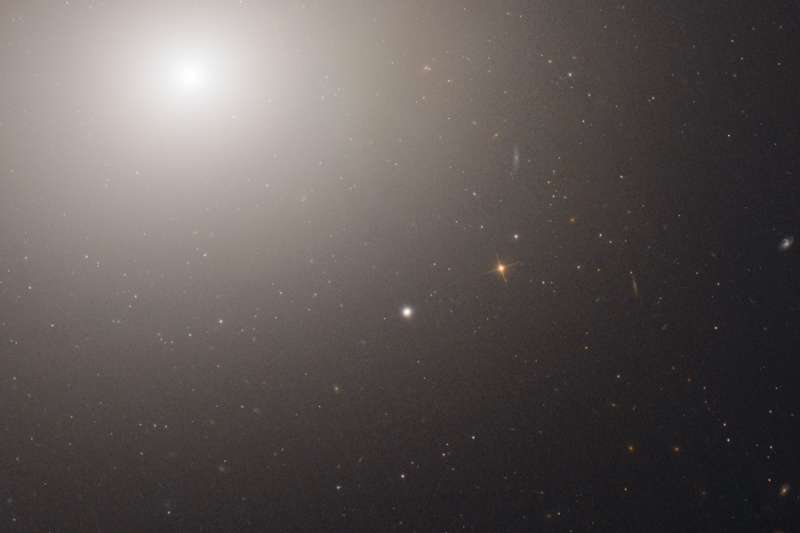Credit & Copyright: NASA,
ESA,
Hubble Heritage Team
(STScI/AURA),
Jay Strader
(Michigan St. Univ.) et al.
Explanation:
The bright core and outer reaches of giant
elliptical galaxy M60
(NGC 4649) loom large at the upper left of this sharp close-up
from the Hubble Space Telescope.
Some 54 million light-years away and 120,000 light-years across,
M60 is one of the largest galaxies in the nearby
Virgo
Cluster.
In cosmic contrast, the small, round smudge at picture center
is now recognized as
an
ultra-compact dwarf galaxy.
Cataloged as M60-UCD1, it may well be
the densest galaxy in the
nearby universe.
Concentrating half of its total mass of 200 million
suns into a radius of only 80 light-years,
stars in the inner regions of M60-UCD1 are on
average 25 times closer together than in planet Earth's
neighborhood of the Milky Way.
Exploring the nature
of M60-UCD1, astronomers are trying to determine
if ultra-compact dwarf galaxies are the
central remnants of larger galaxies that have been
tidally stripped by
gravitatonal encounters, or evolved as massive
globular star clusters.
Recently discovered,
a bright
X-ray source seen at its center
could be due to a supermassive black hole.
If so, that would favor a remnant galaxy origin for M60-UCD1.
Note: How to find
APOD
Alternative Mirror Sites
1999 2000 2001 2002 2003 2004 2005 2006 2007 2008 2009 2010 2011 2012 2013 2014 2015 2016 2017 2018 2019 2020 2021 2022 2023 2024 2025 |
Январь Февраль Март Апрель Май Июнь Июль Август Сентябрь Октябрь Ноябрь Декабрь |
NASA Web Site Statements, Warnings, and Disclaimers
NASA Official: Jay Norris. Specific rights apply.
A service of: LHEA at NASA / GSFC
& Michigan Tech. U.
|
Публикации с ключевыми словами:
Elliptical Galaxy - dwarf galaxy - эллиптическая галактика - компактные объекты - карликовая галактика
Публикации со словами: Elliptical Galaxy - dwarf galaxy - эллиптическая галактика - компактные объекты - карликовая галактика | |
См. также:
Все публикации на ту же тему >> | |
